- Home
- Diana Wynne Jones
Reflections Page 4
Reflections Read online
Page 4
If this picks up and amplifies the earlier suggestions in the Shire that the present is small and ordinary, so does the nature of the Quest, now properly revealed. It is to be a negative one, a raid to destroy the enemy’s inmost defenses. It can only be made by beings so insignificant that the chances of success are minimal. It is destructive. It does not suggest renewal. Or does it? I have heard The Lord of the Rings stigmatized as simply a goodies v. baddies story. Insofar as this is true, it is of course a very modern story. Romances, fairy tales, and even Beowulf do not have baddies the way we do, the way Sauron is. But it is more original than it is modern, now that Tolkien has shown his hand, because it is really about people in time. It concerns the present, fully conscious of the past, injured by it, in fact, pressing forward to make the unformed future. And of course the present is very small compared with both; mere instants. Tolkien makes the outcome dubious, if not equivocal, by having his Fellowship set off in winter—a time of ill omen, of traditional heroism, and of hope too, since spring is to follow—and then by cunningly organizing his narrative in its later stages, so that the issue is continually in doubt, just as the future always is.
The coda to this movement is, very characteristically, the start of the journey. Through more of Tolkien’s meticulously visualized country, the Fellowship sets out. There is a strong sense that this is the nitty-gritty, the real stuff, because the landscape is now harsh and strange and because the proper Quest has been determined. In fact, not insignificantly, this is only partly true. This section serves mainly to lead into the next movement, which is a double one, bringing us hard up against endurance of two kinds.
First comes the achievement of the Dwarves, heralded by the entry into Moria. The finding and opening of the gate is pure magic. I wish I could have written it. But once they get inside, I am never as impressed as I could wish. True, we have majestic evidence of Dwarves’ industry, and proof that their legends at least did not lie—and this tacitly reinforces the rest of the histories we have been given—so that when we come upon the long-dead Dwarves, it should strike us cold as evidence of the latest heroic failure. But I never find it does. I just feel the easy regret one feels on being told someone one didn’t know had died. I suspect that Tolkien has here slipped over into the goodies v. baddies, adventure-story mode. The Orcs, when they appear, do not have personalities as they do in Volume II. They are just the enemy. And then, sudden and shocking, comes the demise of Gandalf. Tolkien must have meant it to be so. I am sure he wanted to impress us with the fact that there is always the unforeseen disaster, and I am sure too that he wanted an ominous foreshadowing of the Lair of Shelob and the Paths of the Dead, but it won’t do all the same. Who or what is the sudden Balrog? Up it pops, and down it goes again, taking Gandalf with it. For all that, the sense of loss is real, and leads in admirably to the second part of the movement, the sojourn in Lórien.
Oh good, you think, we are at last going to plumb the mysteries of the Elves! Legolas has been there for some time now, hinting at these mysteries, and yet, since he is one of the Fellowship, kidding you that Elves can be human and approachable. This is not the case. Tolkien lets you see much, but still leaves the Elves almost as mysterious and alien as they were before you saw Lothlórien. They are genuinely not human. Their concerns seem other, even when they help. The reason seems to be their intense, abiding melancholy. The nostalgia shown earlier by the Elves in the Shire, and then, in a more restrained way, by Elrond, swells here into a huge woodwind theme. The Elves are dwindling, we are told. The Dwarves awakened evil and forced many Elves over the Sea. This could be the explanation, but it is not really. You get the real reason by hints, which you pick up mostly subconsciously: the Elves, by reason of their apparent immortality, are widowed from history. They are forced back on their own, which is merely living memory, unimaginably long. Tolkien conveys quietly, without ever quite centering your sights on it, the immense burden immortality would be. He uses women to do it: the Morning Star, Arwen Evening Star, and Galadriel herself. I daresay women’s lib could make destructive points here, but it is entirely appropriate in a Romance, in which women are traditionally mysterious and a little passive. He is drawing on all the stories of Elf women loving mortal men, and quietly pointing up the concealed consequences: when the lover dies, the immortal woman grieves forever. Women are generally more often widowed than men. But this stands for the situation of all the Elves. When they enter the temporary brawls of history, they pay for it by having to endure its horrors forever. So they are forced for the most part to stay withdrawn among their yellow trees, never dying, but never quite coming to maturity either. The yellow trees vividly express their state. Are mallorns the yellow of spring, or autumn? Both, but not summer or winter. I find them profoundly saddening.
The Elves have wisdom, by a sort of natural compensation, but this can be an equal burden. Galadriel does, in her aloof way, enter history, but she has to do it in full knowledge that she is helping to end the Third Age of the world. You come away from Lothlórien with two pieces of hidden knowledge: a sense of a doomed age, and the fact that every gift exacts its price—sometimes a terrible one.
By now you should be well aware that putting on the Ring exacts its price. This is what happens to end the coda to this movement, just as it ended the coda to the first movement. It has become a pattern now: another stage in the journey, down the Anduin this time, ending in Frodo’s putting on the Ring again. Because of the pattern, you are half expecting another last-minute rescue. So it comes as a real shock when this does not happen and the Fellowship breaks up. Lothlórien fools us to some extent, by appearing to awe and tame Boromir—though it is never said that it has—and the Great River fools us too. The Fellowship appears to be sliding united along its current to a single end. But you always have to watch Tolkien with water. He never uses it unmeaningfully. Pools and lakes mirror stars, and hold hidden things. This Anduin has contrasting banks and, moreover, reeks of history. In a way, it is history, and the Fellowship is going with its current, to break up in confusion at the falls of Rauros. It is worth pointing out that when Aragorn later uses the same river, he comes up it, against the current, changing a course of events that seems inevitable.
The other water is of course the Sea. This has been sounding dimly in our ears throughout the book, but in Lothlórien it begins to thunder. Does it suggest loss, departure, and death? Certainly. But since water is always life to Tolkien, it must also be eternity. Eternity, we must not forget, is by its nature both all time and no time at all. It is quite a feat to invoke the Sea so far inland. The effect is to end the movement with two symbols: a line of scattered figures with the ocean at their backs, confronting the ringed Eye of Sauron. The Eye, which also comes out into the open in Lothlórien, is an absolutely spine-chilling expression of evil—the more so because we never see more of the enemy than that. But it is possible to see the Eye, among its various significances, as the eye of the storm, the self-contained here and now, which the present has to pass through before it becomes the future.
Volume II inaugurates what might be called the great choral movement. The scene widens enormously and the numbers of both enemies and friends suddenly multiply by hundreds. The scale of the story, which Tolkien has unobtrusively been preparing us for, is now shown to be immense. It also involves a fiendishly difficult piece of double and treble narration. I know from bitter experience how difficult it is, when your narrative divides into two or more and both parts happen simultaneously, to decide which part to tell when. But Tolkien’s narrative makes it more difficult still, because Frodo’s part of the story is plotted to run counter to Merry and Pippin’s, to narrow where theirs expands, to flow uphill as it were from the main course of events, so that not only does their Quest seem bound to fail, but you are in doubt as to whether this is what the narrative is really about.
If Tolkien agonized at all about how to do it, it does not show. He solved it characteristically by adopting a pattern: he will tell th
e positive side first, and the negative second. So he succeeds, apparently carelessly and politically, in flinging a huge double and treble twist of narrative across a huge area of land. He fools us a bit, of course, as usual. He represents the destruction of the Ring throughout as the thing of real importance, whereas it is only half of it. The act of destruction must be accompanied by the act of creation—in this case the mustering of allies to Minas Tirith to found a new Gondor. But he represents that as a desperate rearguard action. Indeed, some of his point is that such desperate defenses are unintentionally regenerative. But, from the mere fact of devoting half his narrative to it, he gives away its importance.
First, however, he devotes himself to the Ents, the Riders of Rohan, and to Saruman. The first and last of these have been so firmly foreshadowed in earlier parts of the narrative that one receives them almost with recognition, like a theme emerging from the orchestra, or prophecies fulfilled. Rohan, though it has been mentioned, is like a new theme entirely—which is as it should be. Against all three, the power of Mordor is slowly defined as the true great evil. I do not think that it could have been suggested so strongly in any better way. Mordor is never actually present, but always there in the searching Eye.
Orcs, on the other hand, representing Mordor and Isengard, are very much there, in numbers, splendidly solid: “his aching head was grated by the filthy jowl and hairy ear . . . Immediately in front were bowed backs and tough thick legs going up and down, up and down, unresting, as if they were made of wire and horn” (II, 55). And I think it a stroke of genius to have the Elvish for Orc be Yrch, like an expression of disgust in itself. These Orcs serve the double purpose of presenting the might of Mordor and Isengard and of getting Merry and Pippin to Fangorn—I do like things to pull their weight. Here are the Ents. I remember reading a review of The Two Towers when it first came out, in which the reviewer could not take the Ents. Walking trees! He indignantly concluded Tolkien was trying to foist a children’s story on him as serious literature. He was not far wrong, in a way. Here in Fangorn, Tolkien is echoing the Forest outside the Shire. He is also echoing the childish innocence of the first movement, deliberately and with a difference. Treebeard and his fellows are innocents. I am always impressed by how simply and completely Tolkien expresses this innocence. Like Mordor, Treebeard has eyes:
These deep eyes were now surveying them, slow and solemn, but very penetrating. They were brown shot with a green light. Often afterward Pippin tried to describe his first impression of them. “One felt as if there was an enormous well behind them, filled up with ages of memory and long, slow, steady thinking; but their surface was sparkling with the present . . .” (II, 66)
As I said, take note when Tolkien talks of water. The well of the past contains truth, but it stops short at the present. In this, it is like the Hobbits of the Shire, but unlike the Elves, whose pools reflect stars. The Ents, however, unlike Hobbits, who are pragmatic and capable of growth, are grown up and complete as they are. They are hard to budge toward the future. It is a measure of the seriousness of the situation that the Ents are actually persuaded to move, and even then they only move against the lesser evil of Saruman. They are one of the things which will not survive long in a new age. You are meant to feel, and you do, that is a pity: they embody the mature innocence of the Third Age. But you have to look for real help to the Riders of Rohan, the comparative newcomers, who have yet to make history.
Rohan and its grassy plains have been foreshadowed too, in a way, in the Barrow-downs, so that the new theme when it emerges seems entirely in keeping. But here, instead of Tom Bombadil between grass and sky, it is Gandalf who suddenly reappears, with something of the same force. This too is not unheralded, both by Galadriel’s Mirror and by the previous pattern of the narrative. Gandalf disappears; sooner or later after that, the Ring is used; sooner or later, after that again, Gandalf reappears, a spearhead for the allies, just as the Ringwraiths are for Mordor. Gandalf’s coming to Rohan ought to make one certain that Frodo will put on the Ring again in Mordor.
The Rohirrim are purely Anglo-Saxon. Tolkien lifted them entirely from his study of Old English—even their horses, I suspect, come from the legendary first Saxons in Britain, Hengist and Horsa. They have the Old English heroic culture complete. Tolkien does a delicate job here of differentiating them from Aragorn, who is at once both rougher and more sophisticated, coming as he does from a far older culture. For, as I said, these are a people without a past to whom we should look for the future. If you doubt this, you should contrast the passive roles of the Elf-women with that of Éowyn and the active part she plays, albeit disobediently. But before the Riders can do anything, they have to put their own house in order. Théoden, King of Rohan, has to cast off evil counsel and the weight of age, and then to fight in Helm’s Deep—all of which involves such bewildering coming and going that I always have twinges of incredulity about the stamina of Shadowfax. I also have twinges of doubt, as I am sure you are intended to, about the reliability of Rohan, despite their nobility. I go very Welsh, and when the men of Minas Tirith later say, “Rohan will not come,” I shake my head and mutter about perfidious Albion. Tolkien, as a Welsh scholar, may have had this reaction of mine in mind too. Certainly he is once again performing one of his sleights-of-narrative: for the thing at the back of his mind must certainly have been the way the Saxon King Harold had to march north to fight one invasion force in 1066, before rushing south again to fight the Normans, who were the real threat. Again, there is no need for the reader to know this. It comes over very clearly that the Rohirrim are having difficulty disentangling themselves from their own pressing present. Quite early on, you are asking, can they do it in time to be of use to the future?
Parallel to this in time at least, Frodo and Sam and the noxious Gollum are creeping toward Mordor. This is the section foreshadowed in the coda to the first movement, but the landscape is now far more luridly depressing. Vividly in tune with the negative nature of their Quest are the marsh pools containing images of dead people. Again, watch Tolkien with water. What is history now? Similarly, the only virtues they can exercise are negative: endurance, and forbearance toward Gollum. Everything is sterile, for all their heroism. Tolkien begins asserting their heroism from here on, and it obviously exists, like the positive love between Frodo and Sam, but the negatives are so overwhelming that you sense impending failure.
Therefore you feel relief as well as surprise when they run into Faramir and his guerrillas. It is like coming out into the sun. Tolkien does wonders of suggestion here: the landscape is meticulously southern and the ferns are brown with winter, but the herbs Sam uses to cook with are all evergreen, and so is the cedar he makes his fire with. This has to be deliberate. About the same time, the others are meeting the futureless Ents and the pastless Rohirrim: Frodo and Sam meet those who have a long past but also obvious potential for the future. But notice that, when Tolkien typically reinforces his point with water, Frodo and Faramir are both behind the waterfall at the time when they spare Gollum in the pool. But at the time you ignore that hint and realize simply that here is hope, and a potent force for good. You discover that Mordor has only yet spread patchily in Ithilien.
Be that as it may, as the others make their successful onslaught on Isengard, Frodo and Sam also attack a tower, by way of Cirith Ungol and Shelob. This section has been heavily foreshadowed in the Barrows and the mines of Moria, with their unavailing heroisms, and the weight of that makes this one more horrible. It is horrible enough on its own. The indecisions of Sam make it worse. And finally, despite Sting and Galadriel’s aid, while the other Hobbits triumph in Isengard, Frodo is taken prisoner, an exact reversal of their respective positions at the beginning of the movement. This reversing is part of the deliberate counterplotting of this whole section.
And now we turn to the marvelous city of Minas Tirith, in nearly the final swatch in the plaiting of this huge penultimate movement. We already admire the place because of Faramir, with whom, in a
brief episode, Tolkien has succeeded in dissipating the impression left by Boromir. It adds to the sense of marvel that Minas Tirith is not degenerate and cynical after all. The city has been kept before us one way or another since the Council of Elrond, so that, along with the surprise when we come to it at last, there is a sense of familiarity, as of a hidden theme related to all the others finally emerging from the orchestra. Something of it has been suggested too in the episode back in the Shire when Fatty Bolger is left alone to deal with the Black Riders, and the Hobbits sound their alarm. We are told that the horn “rent the night like fire on a hilltop. AWAKE!” (I, 188). And again in II when the watchfires of Rohan surround the Orcs. Now the beacon fires spring alight round the city as Pippin rides up with Gandalf. The effect is to give Minas Tirith distinctly Christian associations—and why not, since Tolkien has used everything else in our heritage?—because you think at once of “Christians awake!” and that bit of a hymn “How gleam thy watchfires through the night,” which not only adds to the stature of the city, but, as we shall see, casts a little Christianity on Frodo and Sam too.

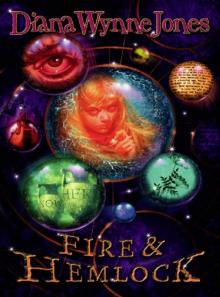 Fire and Hemlock
Fire and Hemlock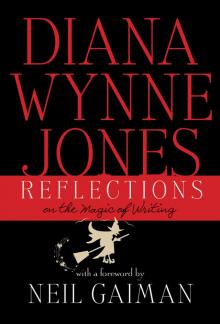 Reflections: On the Magic of Writing
Reflections: On the Magic of Writing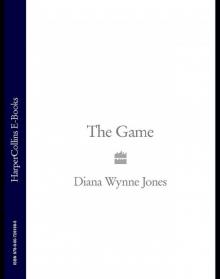 The Game
The Game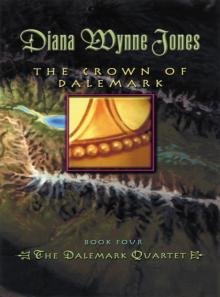 The Crown of Dalemark
The Crown of Dalemark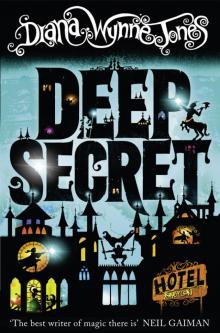 Deep Secret
Deep Secret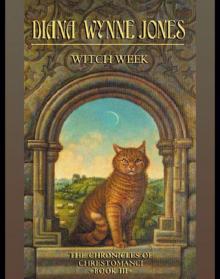 Witch Week
Witch Week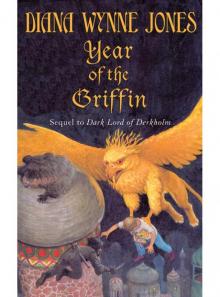 Year of the Griffin
Year of the Griffin Wild Robert
Wild Robert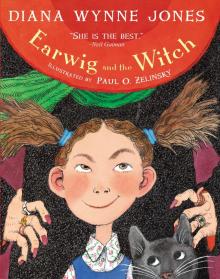 Earwig and the Witch
Earwig and the Witch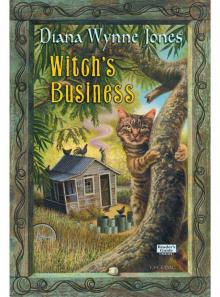 Witch's Business
Witch's Business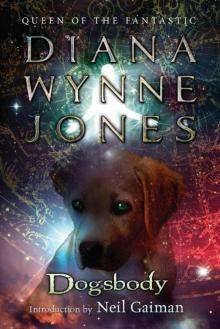 Dogsbody
Dogsbody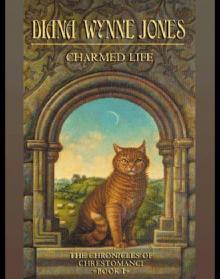 Caribbean Cruising
Caribbean Cruising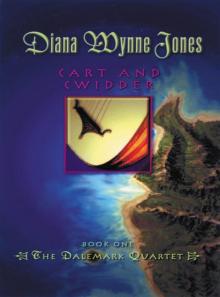 Cart and Cwidder
Cart and Cwidder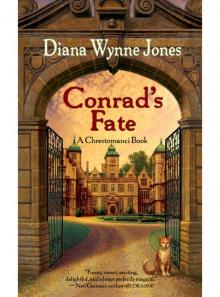 Conrad's Fate
Conrad's Fate Howl's Moving Castle
Howl's Moving Castle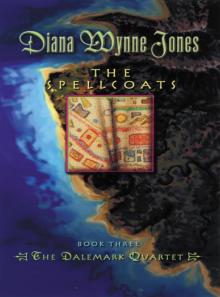 The Spellcoats
The Spellcoats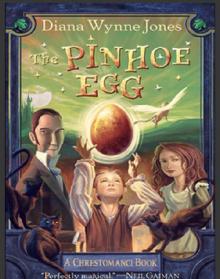 The Pinhoe Egg
The Pinhoe Egg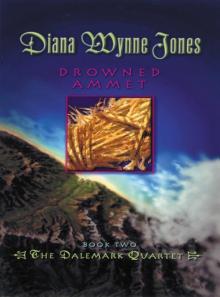 Drowned Ammet
Drowned Ammet The Ogre Downstairs
The Ogre Downstairs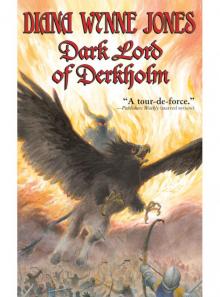 Dark Lord of Derkholm
Dark Lord of Derkholm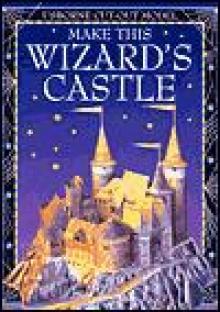 Castle in the Air
Castle in the Air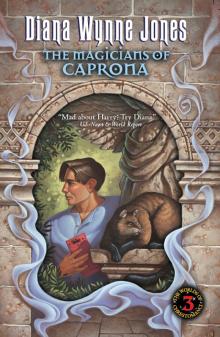 The Magicians of Caprona
The Magicians of Caprona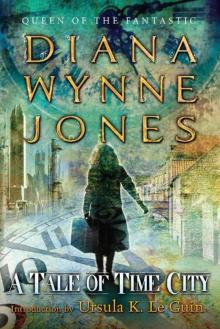 A Tale of Time City
A Tale of Time City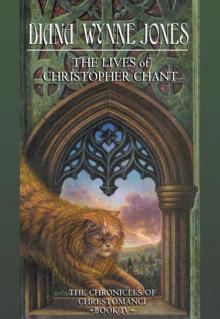 The Lives of Christopher Chant
The Lives of Christopher Chant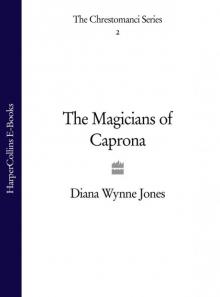 The Magicians of Caprona (UK)
The Magicians of Caprona (UK)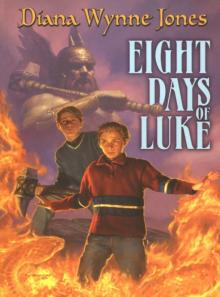 Eight Days of Luke
Eight Days of Luke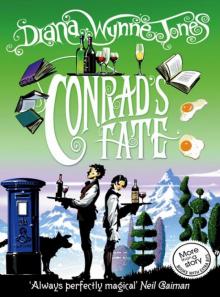 Conrad's Fate (UK)
Conrad's Fate (UK)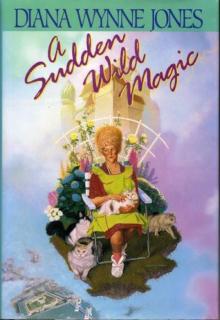 A Sudden Wild Magic
A Sudden Wild Magic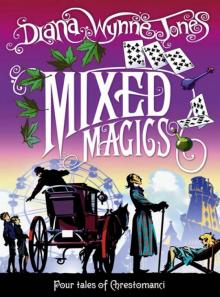 Mixed Magics (UK)
Mixed Magics (UK)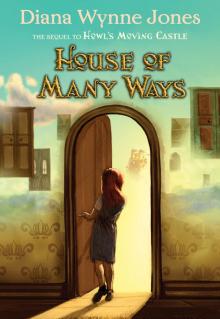 House of Many Ways
House of Many Ways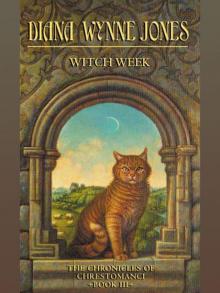 Witch Week (UK)
Witch Week (UK)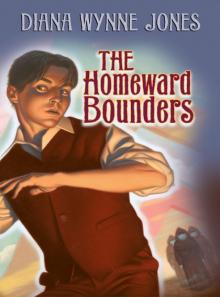 The Homeward Bounders
The Homeward Bounders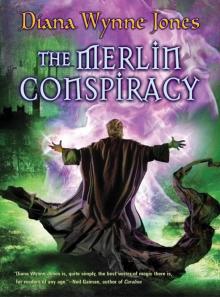 The Merlin Conspiracy
The Merlin Conspiracy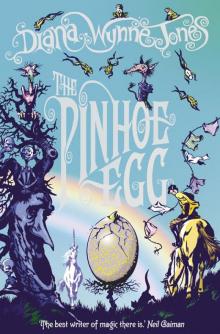 The Pinhoe Egg (UK)
The Pinhoe Egg (UK) The Time of the Ghost
The Time of the Ghost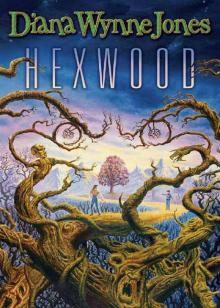 Hexwood
Hexwood Enchanted Glass
Enchanted Glass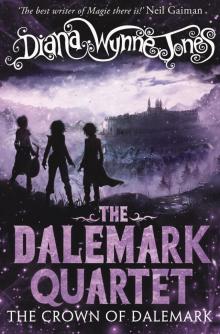 The Crown of Dalemark (UK)
The Crown of Dalemark (UK)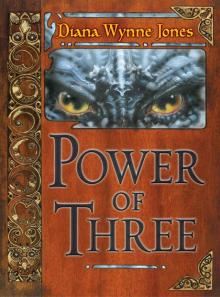 Power of Three
Power of Three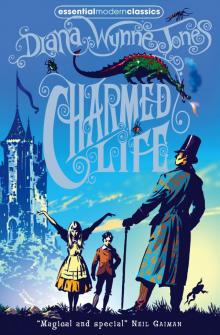 Charmed Life (UK)
Charmed Life (UK)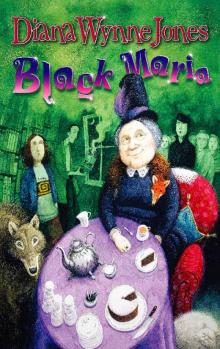 Black Maria
Black Maria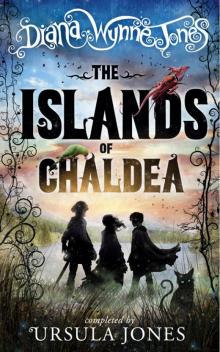 The Islands of Chaldea
The Islands of Chaldea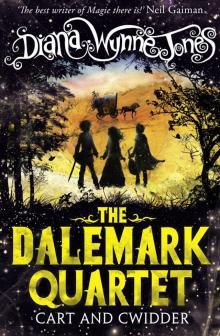 Cart and Cwidder (UK)
Cart and Cwidder (UK)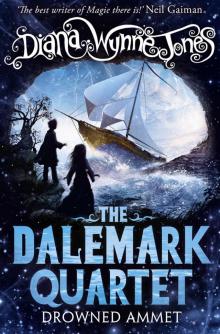 Drowned Ammet (UK)
Drowned Ammet (UK)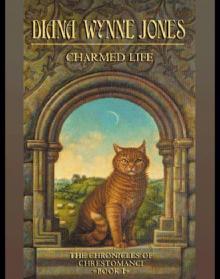 Charmed Life
Charmed Life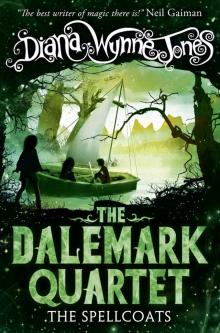 The Spellcoats (UK)
The Spellcoats (UK)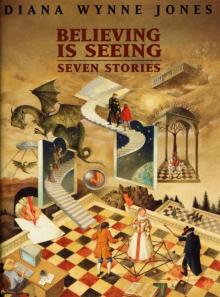 Believing Is Seeing
Believing Is Seeing Samantha's Diary
Samantha's Diary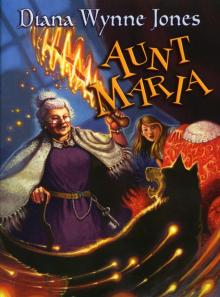 Aunt Maria
Aunt Maria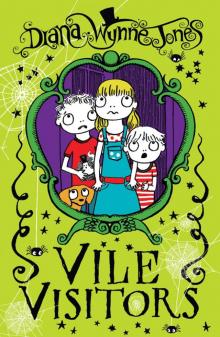 Vile Visitors
Vile Visitors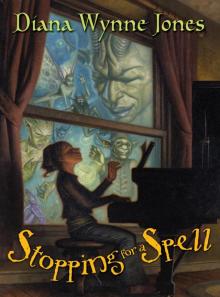 Stopping for a Spell
Stopping for a Spell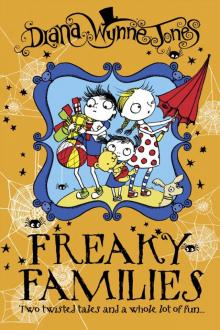 Freaky Families
Freaky Families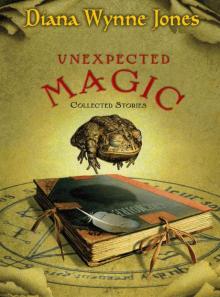 Unexpected Magic
Unexpected Magic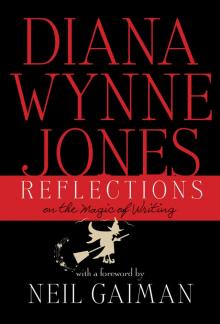 Reflections
Reflections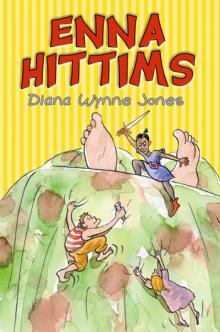 Enna Hittms
Enna Hittms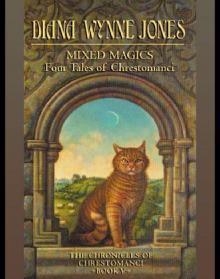 Mixed Magics: Four Tales of Chrestomanci
Mixed Magics: Four Tales of Chrestomanci